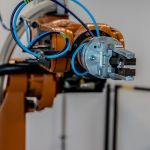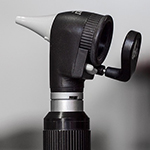Preview

Artificial muscles and sensors for robots
Age suitable for:
- 11 - 14 years-old
- 14 - 16 years-old
- 16 - 18 years-old
- 18+ years-old
When we look at the machines and robots in today's world, they are generally rigid, made of hard materials and using hard motors. In contrast, our own muscles, organs, and sensors in the skin are soft. Why is this? Are there advantages to softer materials? And what will the machines and robots of the future be like? Come and find out!
In this interactive exhibit, meet Dr Hareesh Godaba and researchers from the Bioengineering Group, as they show you how advanced, soft materials can enhance the ability of our robots and machines.
Come and see how artificial muscles (also called actuators) made from rubber can expand when an electric voltage is applied to them - a technology that is making possible new robots inspired by creatures like inchworms, which show highly versatile locomotion.
Witness sensors that, much like the human skin, can not only detect multiple touch points but also estimate how much pressure is applied at each point. This technology will help humans to communicate with robots and machines more intuitively using touch as a medium.
These new materials and technologies could solve many challenges in industry, healthcare, medicine and more - and you can see them in action today!
In this interactive exhibit, meet Dr Hareesh Godaba and researchers from the Bioengineering Group, as they show you how advanced, soft materials can enhance the ability of our robots and machines.
Come and see how artificial muscles (also called actuators) made from rubber can expand when an electric voltage is applied to them - a technology that is making possible new robots inspired by creatures like inchworms, which show highly versatile locomotion.
Witness sensors that, much like the human skin, can not only detect multiple touch points but also estimate how much pressure is applied at each point. This technology will help humans to communicate with robots and machines more intuitively using touch as a medium.
These new materials and technologies could solve many challenges in industry, healthcare, medicine and more - and you can see them in action today!
You may also like

Design your own para-sheet with Southampton Spaceflight!
We at Southampton Spaceflight love all things space! From designing rockets to building all terrain rovers, we like to challenge ourselves. A key part of any launch system (esp ...Read More
Highfield Campus

Video Otoscopy
Have you ever wondered what's inside your ear? Join us for a fascinating journey into the world of sound and hearing! You'll get to see the inside of your own ear with a spec ...Read More
Highfield Campus
 - v2.jpg)
